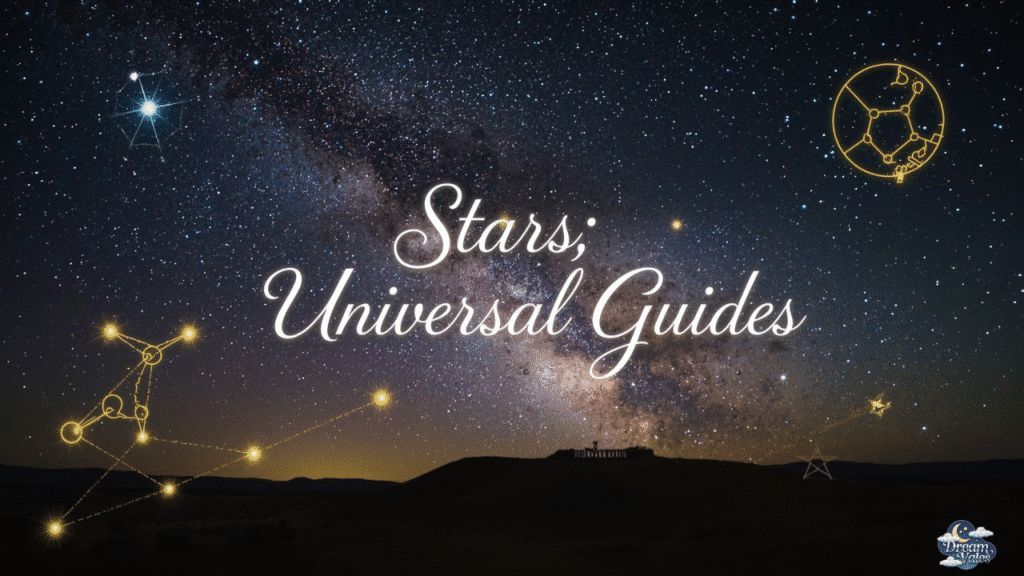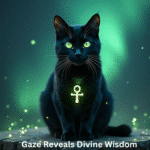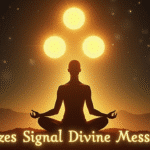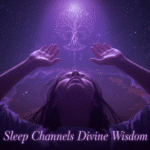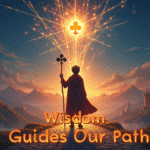Look up at the night sky tonight. Those same twinkling lights guided ancient sailors across treacherous seas and inspired cave painters to create humanity’s first art.
The symbolism of the star is rich and universal, appearing in arts and cultures as a sign of hope, divinity, and guidance. This article explores how different societies use stars to express spiritual and cultural meaning.
Stars aren’t just distant suns burning in space – they’re the original universal language that speaks to every human soul. From Hollywood’s Walk of Fame to the Star of Bethlehem, from military medals to five-star ratings, star symbolism permeates every corner of our modern world.
The Core DNA of Star Symbolism
Yet this cosmic connection runs far deeper than surface-level imagery. Stars have served as humanity’s most enduring symbols for over 40,000 years, transcending cultural boundaries because we all share the same sky.
Navigation Beyond the Physical Realm
Polaris, the North Star, sits almost perfectly aligned with Earth’s rotational axis. This cosmic accident made it humanity’s most reliable navigational tool for millennia, earning names like “never-moving guide” from Phoenician traders and “nail of the sky” from Vikings.

But star-guided sailing represents just the surface of navigational symbolism. Indigenous Australian cultures developed songlines – invisible pathways across the land marked by celestial bodies that encoded both physical directions and spiritual guidance for navigating life’s challenges.
The phrase “following your star” didn’t emerge from modern self-help culture. Medieval alchemists believed each person had a guiding star that determined their destiny, while Chinese feng shui masters read stellar alignments to calculate sacred directions.
| Navigation Symbol | Culture | Meaning | Modern Usage |
|---|---|---|---|
| 🌟 Polaris | Norse | Sky Nail | GPS reference point |
| ⭐ Southern Cross | Australian Aboriginal | Emu’s Head | Aviation navigation |
| 🌠 Venus | Polynesian | Navigator’s Star | Marine compass rose |
| ✨ Sirius | Ancient Egyptian | Flooding Guide | Agricultural calendar |
| 🌟 Big Dipper | Native American | Great Bear | Seasonal timing |
| ⭐ Aldebaran | Arabic | Follower | Desert navigation |
| 🌠 Vega | Chinese | Weaving Girl | Directional reference |
| ✨ Capella | Roman | Little Goat | Maritime guidance |
Modern psychology recognizes this as “locus of control” – our need for external reference points during uncertainty. When life feels chaotic, humans instinctively look up for guidance, just as their ancestors did when lost at sea.
Hope’s Eternal Flame
The phrase “reach for the stars” captures something profound about human nature. Stars represent the ultimate symbol of hope because they shine brightest against the darkest backgrounds, creating this light-in-darkness metaphor that appears in every culture.
During World War II, Jewish prisoners in concentration camps would whisper about the “hidden stars” – celestial bodies invisible during daytime but always present.
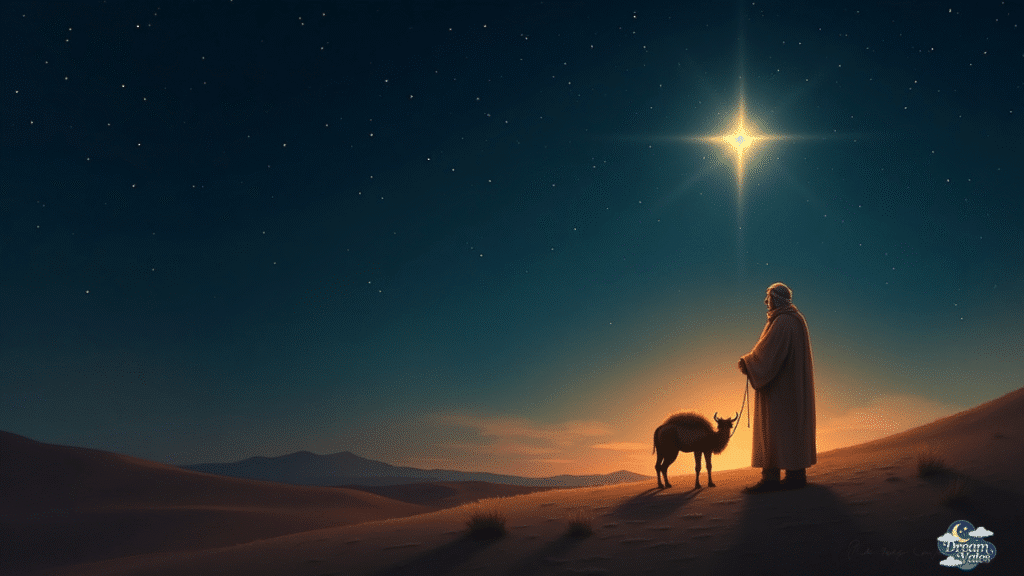
This cosmic hope sustained them through humanity’s darkest hour, similar to how African American spirituals used “following the drinking gourd” to mean following the Big Dipper toward freedom.
Star of Bethlehem remains Christianity’s most powerful hope symbol, representing divine guidance during humanity’s spiritual journey. Whether this was a planetary conjunction, supernova, or comet matters less than its enduring meaning as hope incarnate.
Indigenous cultures worldwide share similar hope narratives. The Lakota tell of the White Buffalo Calf Woman who descended from the stars to bring sacred teachings during their darkest period, while Australian Aboriginal dreamtime stories describe ancestor spirits becoming stars to provide eternal guidance.
| Hope Symbol | Culture | Story | Lesson |
|---|---|---|---|
| 🌟 Star of Bethlehem | Christian | Guiding Light | Divine presence |
| ⭐ Morning Star | Lakota | Sacred Woman | Spiritual renewal |
| 🌠 Seven Sisters | Greek | Pleiades | Comfort in unity |
| ✨ Southern Cross | Inca | Chakana | Sacred geometry |
| 🌟 Dog Star | Dogon | Sirius | Hidden knowledge |
| ⭐ Pole Star | Chinese | Celestial Emperor | Stable leadership |
| 🌠 Evening Star | Mayan | Kukulkan | Cyclical renewal |
| ✨ North Star | Underground Railroad | Freedom Star | Liberation |
Modern research shows that people experiencing depression often describe feeling “disconnected from something larger.” Stargazing therapy helps patients reconnect with cosmic hope by providing perspective on temporary troubles against eternal backdrops.
The Divine Switchboard
Stars serve as humanity’s original communication system with the divine realm. Every major religion incorporates stellar imagery because stars occupy the perfect middle ground between earthly and heavenly realms – close enough to see but distant enough to inspire awe.
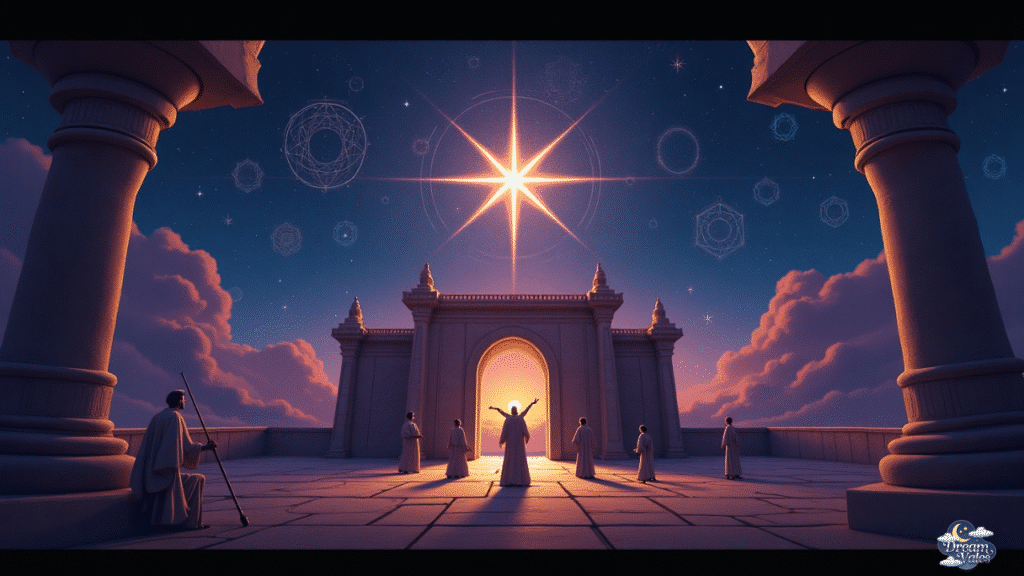
Ancient Mesopotamians believed stars were writing on heaven’s tablet – divine messages carved in light. Babylonian priests spent lifetimes learning to read these heavenly symbols, developing the world’s first astrological systems that weren’t primitive superstition but sophisticated pattern recognition.
Hindu sacred stars include the Nakshatras – 27 lunar mansions that govern spiritual development. Each nakshatra represents a different aspect of consciousness, from Ashwini healing to Revati prosperity, with Vedic astrology using these celestial symbols to understand individual spiritual journeys.
Sufi mystics describe star meditation as “drinking light from the cosmic cup.” They believe each star contains divine attributes that humans can absorb through contemplation, a practice that influenced Islamic geometric art where star patterns represent infinite divine qualities made visible.
Continue on your article: Goat Symbolism & Meaning
Achievement and Success
Five-star ratings didn’t randomly choose this symbol. Stars have represented excellence across cultures for thousands of years because they embody perfection – distant, brilliant, and seemingly eternal qualities that ancient Olympic victors earned through star-shaped medals.
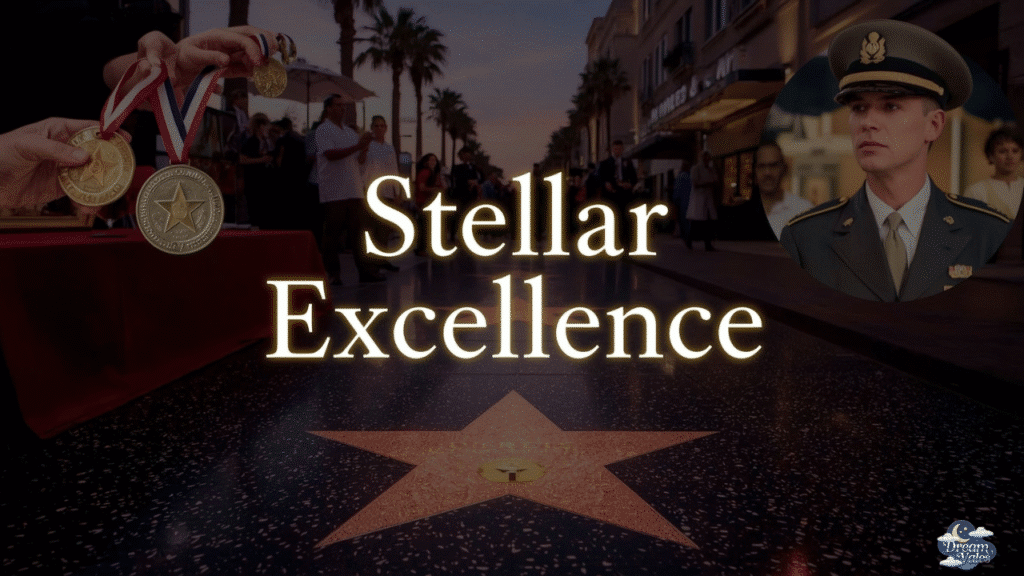
Military honors worldwide use star symbolism to denote rank and valor. The Pentagon contains exactly five sides to mirror the five-pointed star, while generals wear stars to indicate their celestial authority over earthly battles in a tradition extending from Roman legions to modern armed forces.
Academic achievement systems mirror this cosmic hierarchy. PhD dissertations often feature star symbols because earning a doctorate represents reaching toward intellectual heights, with the phrase “stellar student” connecting academic excellence with cosmic perfection.
Hollywood’s Walk of Fame transformed ancient achievement symbolism into modern celebrity culture. Each star represents someone who achieved fame worthy of permanent recognition – a secular version of joining the immortal constellations that Greeks created for their heroes.
| Achievement Context | Star Symbol | Meaning | Cultural Origin |
|---|---|---|---|
| 🌟 Military Rank | General’s Stars | Command Authority | Roman Legion |
| ⭐ Academic Honor | Dean’s List | Intellectual Excellence | Medieval Universities |
| 🌠 Athletic Medal | Olympic Star | Peak Performance | Ancient Greece |
| ✨ Restaurant Rating | Michelin Stars | Culinary Mastery | French Culture |
| 🌟 Hotel Quality | Five-Star Service | Luxury Standard | British Empire |
| ⭐ Product Review | Star Rating | Consumer Approval | Modern Commerce |
| 🌠 Movie Rating | Star System | Entertainment Value | Hollywood |
| ✨ School Grade | Gold Star | Academic Achievement | American Education |
Research shows that star-based rating systems trigger deeper psychological responses than numerical scales. The brain processes star symbols as rewards worth pursuing, explaining why star ratings influence behavior more effectively than percentages.
Fame
Celebrity symbolism and stardom share deep cosmic roots. Ancient cultures believed exceptional individuals became stars after death – literally joining the immortal realm visible to future generations, which explains why we still call famous people “stars.”
The Hollywood Walk of Fame contains over 2,700 stars, each representing someone who achieved fame worthy of permanent recognition.
This modern constellation reflects humanity’s ancient practice of immortalizing heroes in stellar form, just as Greek mythology placed Orion, Andromeda, and other legendary figures among the stars.
Walk of Fame stars aren’t randomly distributed. Each category – motion pictures, television, recording, radio, and live theatre – receives equal representation, mirroring ancient beliefs about balanced cosmic order where the five-pointed star shape represents the human form elevated to cosmic status.
Social media transformed everyone into potential stars through follower counts and viral content. The phrase “fifteen minutes of fame” reflects our democratic relationship with stellar recognition – anyone can briefly shine like a star before fading back into obscurity.
You may also like to read: 17 Symbols of Forgiveness Around the World
Beauty and Wonder
The Starry Night by Vincent van Gogh captures something essential about cosmic beauty. The swirling sky filled with luminous stars represents more than artistic technique – it visualizes the sense of awe that stars inspire in human consciousness, painted while van Gogh recovered in an asylum.
Poetic stars appear in literature across cultures because they represent beauty beyond human creation. Shakespeare wrote “doubt thou the stars are fire” in Hamlet, using stellar imagery to express love’s cosmic significance through aesthetic symbols that still resonate today.
Modern research confirms that stargazing triggers the same brain responses as viewing great art or hearing beautiful music. The sense of wonder and cosmic beauty creates measurable changes in consciousness, reducing stress hormones and increasing creativity-related neurotransmitters.
Diamonds are compared to stars, not vice versa, because stellar beauty represents the original standard. Ancient cultures described precious gems as “fallen stars” – pieces of cosmic beauty made tangible, explaining why engagement rings traditionally feature star-shaped settings.
Ancient Mesopotamia about Where Civilization First Counted Stars
The Sumerians developed humanity’s first written language partly to record stellar observations. Their cuneiform tablets contain detailed star catalogs dating back 5,000 years, establishing the foundation for all subsequent astronomy as religious documents where divine astronomy was essential for understanding cosmic order.
Ishtar, the goddess of love and war, was represented by an eight-pointed star that became one of history’s most recognizable symbols.
This celestial deity governed both Venus as the morning star and evening star, demonstrating early understanding of planetary movements that appeared on everything from royal seals to temple decorations.
Babylonian priests spent decades learning to read celestial messages. They divided the sky into three regions – Anu, Enlil, and Ea – each governed by different deities in a cosmic government model that influenced earthly political structures with kings claiming divine authority through stellar alignment.
The Mul.Apin tablets contain the world’s first comprehensive star catalog, listing 66 stars and constellations with their rising times, religious significance, and agricultural connections. These celestial deities weren’t abstract concepts but active participants in human affairs, requiring constant attention and proper rituals.
| Mesopotamian Star | Divine Association | Earthly Influence | Modern Name |
|---|---|---|---|
| 🌟 Ishtar’s Star | Love & War Goddess | Venus cycles | Venus |
| ⭐ Marduk’s Star | King of Gods | Jupiter authority | Jupiter |
| 🌠 Nergal’s Star | Death & Plague | Mars influence | Mars |
| ✨ Nabu’s Star | Wisdom & Writing | Mercury speed | Mercury |
| 🌟 Sin’s Star | Moon God | Lunar calendar | Moon |
| ⭐ Shamash’s Star | Sun God | Solar year | Sun |
| 🌠 Ninurta’s Star | War & Agriculture | Saturn cycles | Saturn |
| ✨ Tiamat’s Stars | Chaos Dragons | Constellation myths | Various |
Ziggurat temples reached toward stellar gods, with each level representing different celestial spheres. The Tower of Babel story reflects Mesopotamian ambitions to literally touch the stars – an engineering project designed to facilitate divine communication.
Egyptian Stellar Mastery about Building Pyramids by Starlight
Ancient Egyptians achieved the most sophisticated stellar integration in human history. The Sirius star system governed their entire civilization – its heliacal rising predicted the annual Nile flood that sustained Egyptian agriculture through a cosmic calendar so accurate that modern astronomers still use it.
Pyramid builders aligned the Great Pyramid’s shafts with specific stars to ensure the pharaoh’s soul could travel to stellar destinations. The king’s chamber targets Orion’s Belt, which Egyptians called the “Soul of Osiris,” while the queen’s chamber points toward Sirius, associated with Isis.
Egyptian tomb ceilings featured detailed star charts showing the deceased’s path through celestial realms. These weren’t decorative art but functional navigation tools for the afterlife journey, where the deceased needed to identify specific stars to reach their final destination among the imperishable ones.
Decans – 36 stellar groups that divided the Egyptian year – provided the world’s first comprehensive timekeeping system. Each decan rose heliacally for ten days, creating a 360-day year plus five festival days that influenced Greek astronomy and eventually our modern calendar system.
The goddess Nut arched her star-covered body across the sky, swallowing the sun each evening and giving birth to it each morning. This cosmic mother figure represented the universe itself, with stars as her children providing light during the sun’s nightly journey through her body.
Greek Constellations about Turning Tragedy into Eternal Stories
Greek mythology transformed the night sky into history’s greatest storybook. Unlike other cultures that saw gods in star patterns, Greeks projected human drama onto celestial canvas in a revolutionary approach that created constellation stories still influencing how we see the night sky.
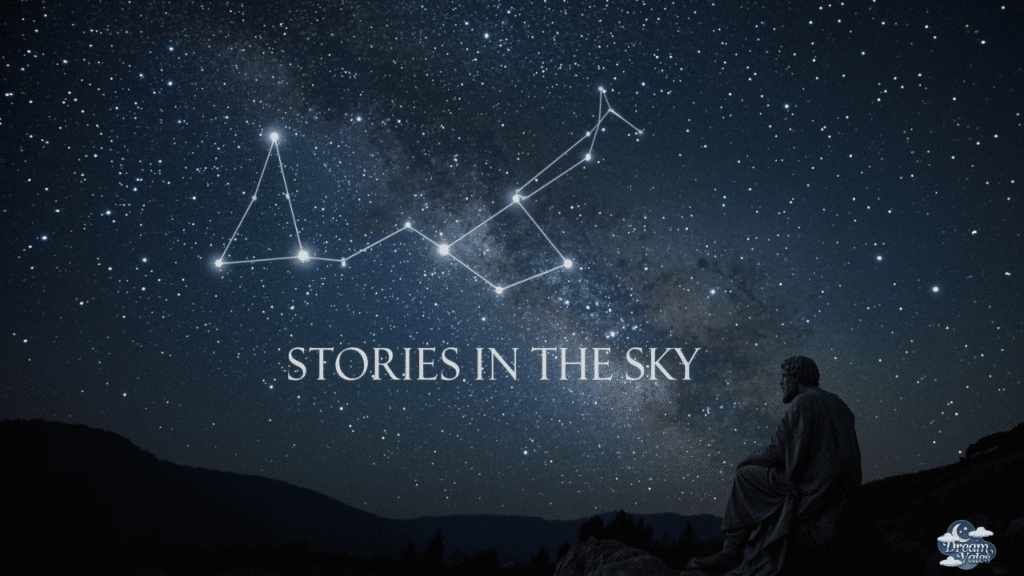
Orion represents the ultimate hunter, placed among the stars after boasting he could kill any creature on Earth. The constellation rises during winter hunting season, demonstrating how Greeks connected stellar timing with earthly activities through belt stars called the “Three Kings” by later cultures.
Andromeda tells a complete dramatic story visible in neighboring constellations. Princess Andromeda was chained to a rock as sacrifice to Cetus the sea monster, only to be rescued by Perseus riding Pegasus the winged horse in a celestial soap opera occupying a huge section of autumn sky.
Greek philosophers used stellar metaphors to explain abstract concepts. Plato’s cave allegory describes prisoners seeing shadows on walls, unaware of the real world outside, comparing philosophical enlightenment to seeing actual stars after being chained in darkness.
The Pleiades cluster became the Seven Sisters in Greek mythology – daughters of Atlas who were transformed into stars to escape Orion’s pursuit. This star cluster serves as a natural eye test, with different cultures counting different numbers reflecting varying mythological traditions.
| Greek Constellation | Mythic Story | Moral Lesson | Seasonal Timing |
|---|---|---|---|
| 🌟 Orion | Boastful Hunter | Hubris consequences | Winter hunting |
| ⭐ Andromeda | Chained Princess | Sacrifice & rescue | Autumn romance |
| 🌠 Perseus | Hero’s Journey | Courage rewarded | Hero’s season |
| ✨ Cassiopeia | Vain Queen | Beauty’s price | Year-round warning |
| 🌟 Pegasus | Winged Horse | Inspiration’s flight | Autumn creativity |
| ⭐ Cygnus | Swan’s Grace | Transformation | Summer beauty |
| 🌠 Lyra | Orpheus’ Harp | Music’s power | Summer artistry |
| ✨ Draco | Guardian Dragon | Eternal vigilance | Circumpolar duty |
Greek star myths served educational purposes, teaching moral lessons through memorable stories. Children learned constellation positions by following dramatic narratives, creating mental maps that lasted lifetimes while encoding practical astronomical knowledge.
If you’re interested, check out: Symbols of Harmony in Arts and Culture
Taoist Stars about Harmony Written in Heaven’s Script
Taoist cosmology views stars as expressions of the Tao – the fundamental principle underlying all existence. Unlike Western traditions that see stars as distant objects, Taoism considers celestial bodies as active participants in cosmic harmony where the Big Dipper serves as the celestial government’s administrative center.
Chinese emperors claimed the “Mandate of Heaven” partly through stellar alignment. The Purple Forbidden Enclosure – a group of circumpolar stars – represented the cosmic emperor’s palace, where earthly rulers needed to mirror this celestial order to maintain legitimacy through governmental structures reflecting stellar arrangements.
Beidou worship involved complex rituals where practitioners would “walk the stars” – moving in patterns that mirrored the constellation’s rotation around Polaris. These cosmic axis ceremonies were believed to align personal energy with universal forces, achieving spiritual harmony through stellar connection.
Indigenous Wisdom about Stars as Ancestral Guides
Ethiopian Orthodox Christians use the Sirius calendar to determine religious festivals. Their New Year begins with Sirius’s heliacal rising, maintaining a stellar connection that predates Christianity through a cosmic timing system unchanged for over 2,000 years.
African Star Traditions
The Dogon people of Mali possess astronomical knowledge that baffled Western scientists for decades. They accurately described Sirius B – a white dwarf star invisible to naked-eye observation – centuries before telescopes could detect it through creation myths centering on beings from the Sirius system.
Dogon cosmology describes Sirius A as the “star of women” and Sirius B as the “star of men,” with their orbital dance representing cosmic marriage.
This stellar relationship governs earthly fertility cycles, marriage ceremonies, and agricultural timing through a calendar coordinating multiple stellar cycles with remarkable precision.
San people of the Kalahari Desert developed sophisticated star lore for hunting and gathering. Their constellation stories encode seasonal information, animal behavior patterns, and water source locations, where the “Hunting Stars” rise when antelope herds migrate.
Native American Star Wisdom
Lakota Morning Star ceremonies connect earthly life with celestial cycles. The Morning Star represents the connection between earth and sky, serving as messenger between human and spirit worlds through dawn rituals that align community activities with cosmic rhythms.
Navajo star songs encode astronomical information in oral tradition. Each song corresponds to specific star positions throughout the year, creating a musical star map that preserves navigation knowledge across generations by combining entertainment with essential survival information.
Different Native American tribes saw completely different stories in identical star patterns. The Big Dipper appears as a bear to some tribes, a wagon to others, and a drinking gourd to those using it for Underground Railroad navigation, demonstrating how cultural context shapes star significance.
Hopi prophecies include detailed stellar references that some interpret as predicting modern astronomical discoveries. The “Blue Star Kachina” prophecy describes a celestial event that will herald spiritual purification – a stellar prediction that continues influencing contemporary Hopi culture.
Australian Aboriginal Dreamtime
Aboriginal Australians maintain Earth’s oldest continuous astronomical tradition, with star lore dating back over 65,000 years. The Emu in the Sky – dark nebulae in the Milky Way – appears when earthly emus begin laying eggs, providing precise seasonal timing for traditional food gathering.
Songlines connect terrestrial landmarks with celestial navigation points. These invisible pathways across the continent encode both spiritual stories and practical travel information, where initiates learn to navigate vast distances by following stellar songlines passed down through countless generations.
The Seven Sisters story appears across different Aboriginal groups with remarkable consistency. These sister stars flee across the sky pursued by male stars, with the story encoding both moral lessons about proper behavior and practical information about seasonal changes.
Aboriginal star knowledge includes detailed observations of variable stars, planetary movements, and even galaxies visible to naked-eye observation.
The Magellanic Clouds feature prominently in Dreamtime stories as cosmic campfires or water holes, demonstrating sophisticated understanding of deep-sky objects.
Star Symbolism in Literature
Shakespeare elevated star symbolism to unprecedented literary heights. “Romeo and Juliet” describes the lovers as “star-crossed,” suggesting that cosmic forces doomed their relationship from the beginning through stellar metaphors that reflected Elizabethan beliefs about astronomical influence on human destiny.
The phrase “star-crossed lovers” entered common usage because it captures something universal about tragic romance.
When earthly obstacles seem insurmountable, humans attribute their struggles to cosmic forces beyond their control, with Shakespeare’s stellar imagery continuing to resonate through eternal human experiences.
“Hamlet” contains multiple stellar references, including “doubt thou the stars are fire” and descriptions of omens written in heaven’s script.
These cosmic metaphors reflect the era’s worldview where astronomical events directly influenced earthly affairs, reinforcing themes about fate, destiny, and cosmic justice.
Walt Whitman revolutionized American poetry partly through cosmic imagery. “When I Heard the Learn’d Astronomer” contrasts scientific star study with direct stellar experience, suggesting that immediate wonder surpasses academic analysis through a romantic approach that influenced generations of American writers.
Modern literature continues mining stellar symbolism for emotional depth. John Green’s “The Fault in Our Stars” uses astronomical metaphors to explore mortality, love, and meaning, with the title referencing Shakespeare while addressing contemporary issues that demonstrate star symbolism’s continued relevance.
Science fiction authors create entire civilizations around stellar concepts. Isaac Asimov’s Foundation series envisions a galactic empire governed by “psychohistory” – mathematical prediction based on large-scale social patterns reflecting humanity’s ancient fascination with stellar influence on earthly affairs.
Stars in Our Digital Age about Ancient Symbols, Modern Meanings
Five-star ratings dominate modern commerce because they tap into ancient stellar symbolism. Amazon reviews, restaurant ratings, and hotel classifications all use star-based systems that trigger deeper psychological responses than numerical alternatives, with the brain processing star symbols as rewards worth pursuing.
Social media transformed everyone into potential celebrities through follower counts and viral content.
The democratization of fame reflects humanity’s ancient desire for stellar recognition – to shine brightly enough that others notice and remember, with Instagram “stories” that disappear after 24 hours mirroring how most stars briefly flare before fading.
Space exploration fundamentally changed our relationship with stellar symbolism. When humans first saw Earth from space, the overview effect shifted perspective from looking up at stars to recognizing our planet as a “pale blue dot” among countless others, influencing environmental awareness and global consciousness.
Astrology apps combine ancient star wisdom with modern technology, allowing anyone to access sophisticated astrological calculations instantly. Whether you believe in stellar influence or not, these apps demonstrate humanity’s continued fascination with cosmic connection, with the most popular having over 40 million users seeking stellar guidance.
Urban light pollution disconnects most people from direct stellar experience. City dwellers often go years without seeing the Milky Way clearly, losing the cosmic perspective that shaped human consciousness for millennia in a stellar disconnection that may contribute to modern anxiety and depression rates.
Planetarium experiences attempt to restore stellar connection through immersive technology. These artificial night skies can show historical star positions, future stellar movements, and perspectives from other worlds, with virtual reality stargazing representing humanity’s attempt to technologically recreate ancestral cosmic experiences.
You might find this interesting: Wind Symbolism Across Cultures and Religions Around The World
The Eternal Twinkle about Why Stars Will Always Matter
Star symbolism endures because it addresses fundamental human needs that technology cannot eliminate.
We require guidance systems for navigating life’s uncertainties, hope symbols during difficult periods, and beauty that transcends daily concerns, with stars fulfilling these psychological requirements through their unique combination of visibility, mystery, and permanence.
Modern neuroscience confirms that stargazing triggers specific brain responses associated with awe, wonder, and transcendence.
The default mode network – neural circuits active during rest and introspection – shows increased activity during stellar observation, suggesting that star contemplation naturally promotes self-reflection and philosophical thinking.
Children worldwide still point at their first star with the same wonder their ancestors felt 100,000 years ago.
This universal response indicates that stellar fascination represents an inherent aspect of human consciousness rather than learned cultural behavior, with the meaning of stars resonating across all developmental stages.
Climate change and environmental destruction make stellar symbolism increasingly relevant as metaphors for hope, guidance, and cosmic perspective.
When earthly systems seem chaotic, stars provide stable reference points that have guided humans through previous crises, with the cosmic view from space stations showing Earth as a shared stellar oasis requiring collective protection.
Future space colonization will create new relationships with stellar symbolism as humans spread across the galaxy.
Martian colonists will develop different star lore based on Red Planet perspectives, while asteroid miners might worship binary star systems in cosmic connections that will expand rather than replace ancient stellar traditions.
Spiritual star meaning continues evolving as humans explore cosmic questions through scientific and philosophical inquiry.
Whether stars contain conscious intelligence, participate in cosmic evolution, or simply represent beautiful accidents of physics, they remain humanity’s most enduring symbols for concepts larger than individual existence.
Your personal relationship with star symbolism reflects this ancient cosmic connection. Whether you make wishes on first stars, navigate by Polaris, or simply pause to admire stellar beauty.
you participate in humanity’s oldest continuous cultural tradition connecting you with every human who has ever gazed upward and wondered about their place in the cosmic story.

